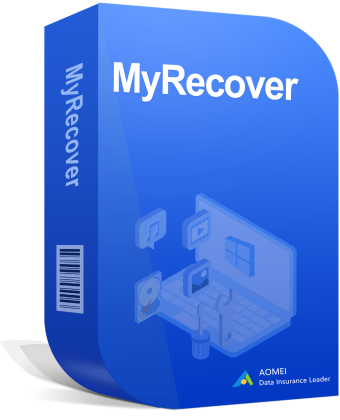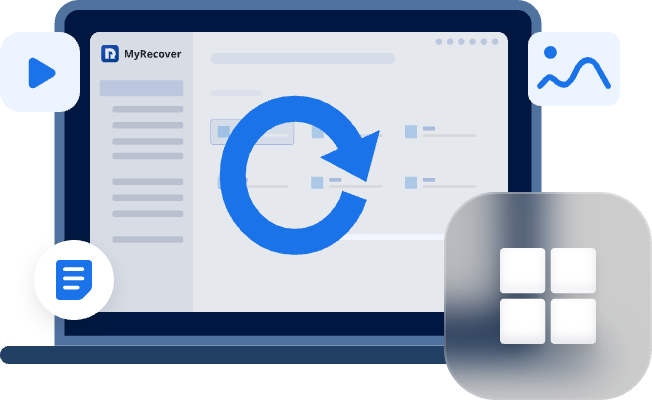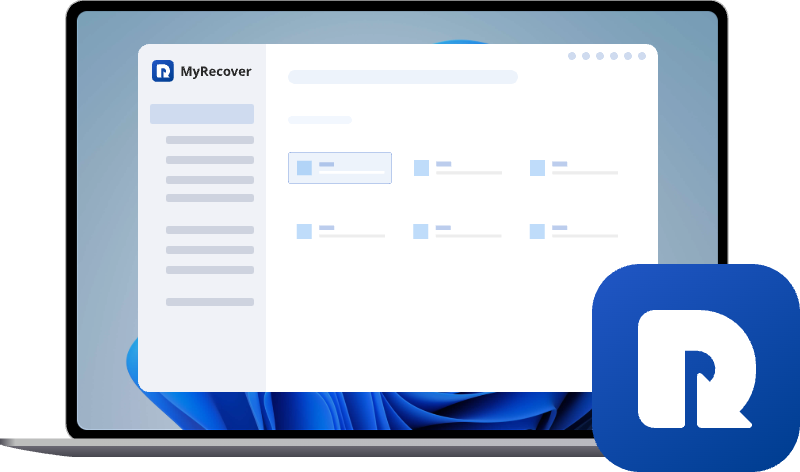Fixed: Windows Cannot Access the Specified Device, Path, or File in Windows 11, 10
This guide provides a clear, step-by-step process to resolve the "Windows cannot access the specified device, path, or file" error. We detail multiple methods to fix Windows cannot access the specified device, including permission repairs and service checks, to restore your access quickly and efficiently.
Windows Cannot Access The Specified Device, Path, or File!
How do I fix Windows cannot access the specified device?
I've had this issue for then 2 months now, before the new act, I was grinding the game and after the act I haven't even been able to play. I tried to play the game from Epic games and from Riot client, neither of them work, today I uninstalled and reinstalled from both the platforms but i'm still getting the error, I tried running the program as Administrator to no avail. Youtube tutorials also don't work. Please help.
G:\Valorant Stuff\Riot Games\VALORANT\live\VALORANT.exe
Windows cannot access the specified device, path, or file. you may not have the appropriate permissions to access the item.
- Question from reddit.com
If you are suffering from the same issue, you are in the right place. Don’t worry, you will find the solutions to fix it and recover your precious files easily with the detailed steps listed below.
Causes for Windows 10 Cannot Access the Specified Device Path or File
You'll typically see this error for one of these common reasons:
✔️ Unavailable Location: The file is on a network path or external drive that isn't currently connected.
✔️ Missing File: The file may have been moved, renamed, or deleted.
✔️ File Corruption: The original file or the shortcut pointing to it is damaged.
✔️ Security Block: The file is being blocked by Windows security features or your antivirus program.
How Do I Fix "Windows Cannot Access The Specified Device, Path, or File"?
If you are stuck with the error message "Windows cannot access the specified device, path, or file" in Windows 11, 10, or 7, no matter what you are doing, opening a file, running an application like Adobe Acrobat, OneDrive, Minecraft, or Outlook. You can try these solutions to fix it quickly.
Way 1. Verify the File or Device Path
A typo is a simple but surprisingly common issue. Double-check the path for any extra spaces or misspelled words.
If you're using a shortcut, go to the file directly through File Explorer.
For external devices, unplug and reconnect the USB cable, trying a different port on your computer.
If the file has been moved or deleted, you cannot access this file. Go to the location of the file, and make sure the file is in that location.
Sometimes, a loose connection is the only problem. Confirm the connection is right.
Way 2. Check the Network Connection Issues
If you're trying to access a network drive or a shared folder on another computer, your local network is the first thing to suspect. Ensure both computers are on the same network, that network sharing is turned on, and that you can ping the target computer. A flaky Wi-Fi signal or a disconnected Ethernet cable can absolutely be the reason your Windows computer cannot access the specified device.
Way 3. Powered On the Target Device
It sounds silly, but it happens! If you're trying to access an external hard drive that has its own power supply, make sure it's plugged in and the power switch is turned on. For devices that draw power from the USB port, ensure the port is functioning by plugging in another device.
Way 4. Unblock File
If the file is downloaded from the Internet, please ensure it’s not blocked. To do this:
1. Right-click the file and select Properties.
2. In the General tab, look for an "Unblock" option at the bottom, then tick it.
Way 5. Run as Administrator
If you are trying to run an application, try running it as an administrator.
Right-click the program or shortcut and select Run as administrator.
Then check if you have fixed this problem. If not, try the next solution.
Way 6: Recreate the Shortcut
You can also receive this error if the shortcut or other file type has become corrupt. You can check for corruption in shortcuts by recreating the shortcut. To do this, see Create or delete a shortcut.
If an application or other type of file is corrupt, it may be necessary to repair the application to resolve the issue.
Way 7. Take Ownership of the File or Folder
This is the nuclear option for permissions and is incredibly effective. By taking ownership, you make yourself the primary authority on that resource, allowing you to reset the permissions as you see fit.
To do this:
1. Right-click the file or folder, select 'Properties'.
2. Then go to the 'Security' tab.
3. Click 'Advanced', and next to the owner, click 'Change'.
4. Enter your username, check 'Replace owner on subcontainers and objects', and apply the changes.
Besides, you can also right-click the file or folder and select Properties, go to the Security tab. Click Edit to see the permissions for your user account. Ensure you have "Full control" and "Read & execute" permissions. If not, click Advanced, then Add, Select a principal, find "Everyone", and grant them Full control.
This often instantly resolves the "Windows cannot access the specified device, path, or file" error for local files and folders.
Way 8. Disable Antivirus Temporarily
Antivirus software can sometimes block access to files, causing this error. Search for and open Windows Security. Navigate to App and browser control settings. Find the "Reputation-based protection" settings and temporarily disable "Block apps" or "Block downloads".
After accessing the file, re-enable these settings to maintain security.
Way 9. Scan for System File Corruption
System File Checker (SFC) is a built-in Windows tool that scans for and restores corrupted system files.
Run Command Prompt as an Administrator and type sfc /scannow, and press Enter to scan and repair system files.
Let the process complete; if it finds and fixes anything, restart your computer and check if the access issue is resolved.
Way 10. Reset Access
The Command Prompt can forcefully reset permissions.
Open Command Prompt as an Administrator and type the following command, replacing X:\Path\To\Folder with the actual path of your problematic folder:
icacls "X:\Path\To\Folder" /reset /T /C
This command resets all permissions to their inherited defaults, which can clear up any conflicting or corrupted permission entries.
Recover Files Immediately with MyRecover
When you've tried everything and still can't access your files, all hope is not lost. This is where a robust data recovery tool like MyRecover becomes your best friend. It's designed to bypass Windows' file system errors and read the data directly from the storage device, allowing you to rescue your documents, photos, and videos even when Windows itself won't boot up.
MyRecover performs a deep scan of the disk sectors, looking for recognizable file signatures. So, MyRecover can see and find your files, then recover every possible file easily for you. With MyRecover, you can enjoy the following benefits:
- On All Windows Computers. MyRecover supports all Windows operating systems, like Windows 11/10/8.1/8/7/Vista/XP, and Server 2025/2022/2019/2016/2012/2008.
- Preview Files Before Recovery. To find and recover the right files, you can preview these files to ensure they are intact.
- Recover Unlimited Data. You can recover unlimited files if required.
- Intuitive Interface. MyRecover provides a user-friendly interface to recover files easily, even if you are a newbie.
- Recover Files from Any Complex Situation. You can recover files from SSD after format, recover files from an emptied recycle bin, recover files from an unbootable computer, etc.
So, how to recover your locally inaccessible files with MyRecover? Try this (if the files are located in an external hard drive, please connect it to your computer and ensure it can be detected):
1. Download and install MyRecover, then execute it.
2. Tap Deleted Files Recovery, for example, hit Scan while pointing to the specific drive that is giving you the "Windows cannot access the specified device, path, or file" error.
3. Wait for the scanning to complete, and hit OK.
4. Choose these files and folders, hit Recover.
5. Select a safe directory to save these recovered files, and hit Select Folder.
- Tips:✎...
- All recoverable files are sorted by file type after scanning, you can view them sorted by original path. You can use the preview function to see the contents of files like photos and documents before recovery.
- Saving the recovered data back to the same problematic drive could corrupt the files permanently and make them unrecoverable.
- You can also recover files from unlimited computers with MyRecover Technician if you’re working within a company.

- Recover Deleted Files Easily with Simple Clicks
- 1000+ File Formats Supported
- Support HDD, SSD, External Hard Drive, USB Drive, SD Card, etc.
- Quickly Find Files Using File Types, Name, Size, etc.
- Preview Files Before Recovering
- Recover Unlimited Data
FAQs about Windows Cannot Access the Specified Device
What does "Windows cannot access the specified device, path, or file" actually mean?
A: It's primarily a permissions issue. Windows is blocking your access to a resource. The "lock" could be faulty permissions, corrupted files, bad drivers, or a network policy, not necessarily a broken device.
How do I fix "Windows cannot access the specified device" on an external hard drive?
A: First, check the hardware: try a different cable, USB port, and computer. If the drive is detected in Disk Management but has no letter, assign one. If that fails, take ownership of the entire drive via its Properties. As a last step, use data recovery software like MyRecover.
I get this error on a network folder I could access yesterday. What changed?
A: This is often due to changed login credentials. Use Credential Manager to delete old stored passwords for that share. It could also be caused by a restart of the host computer, a recent Windows update changing firewall settings, or the share's permissions being modified.
Can a virus cause this "cannot access the specified device" error?
A: Yes. Malware, especially ransomware, often manipulates file permissions to lock you out. Run a full scan with a security tool like Windows Security or Malwarebytes. After cleaning the infection, you'll likely still need to repair the permissions it damaged.
The Verdict
After reading here, you might have fixed the "Windows cannot access the specified device, path, or file" error with the above 10 solutions. If not, you can try MyRecover to recover your files according to your situation.
Besides, MyRecover can recover files from a RAW partition, an NTFS drive, recover from an unformatted partition, etc. So, why not give it a try now?


